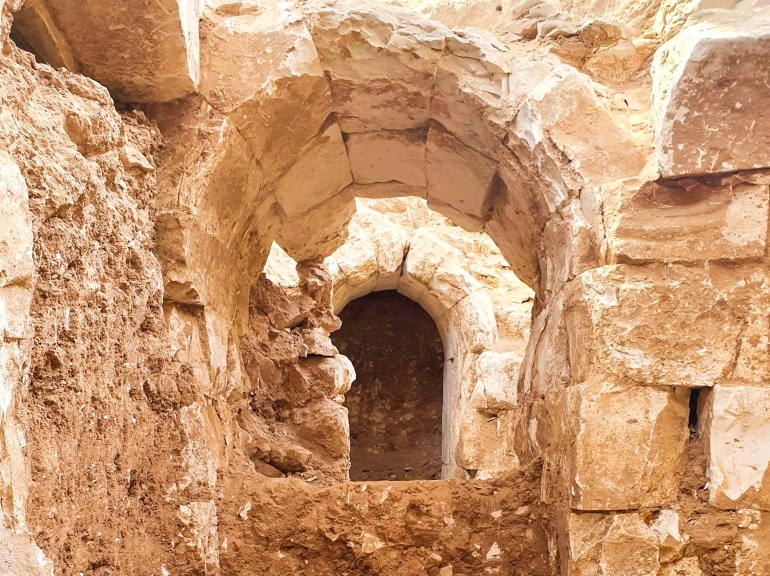On Tuesday, archaeologists announced the discovery of a "luxury rural estate" dating back to the era of Islam's entry into the southern Negev region.
In a written statement, the Israel Antiquities Authority said, “A 1,200-year-old luxury rural estate, the first of its kind in the Negev, was unearthed.” It added, “It was a surprise waiting for archaeologists in the building’s courtyard: a unique domed complex atop a water tank carved into the rocks, It is 3 meters deep.
Eighth and ninth centuries AD
The statement continued, "The building dates back to the eighth and ninth centuries AD, and it was built around a central courtyard, and it consists of 4 wings with rooms to meet the needs of the residents."
He added that "in one of the wings there was a hall paved with a marble and stone floor and walls decorated with frescoes on wet plaster, and the fragments of the small frescoes present were meticulously painted in red, yellow, blue and black."
"Other rooms in the building have gypsum floors, and in other rooms very large ovens were discovered, possibly for cooking," he added.
The building is built around a central courtyard and consists of 4 wings (Anatolia)
The directors of the excavations said, "This is a unique discovery unknown until today. We were surprised to discover a group of stone-built vaults 5.5 meters deep under the courtyard, 2.5 meters high. The vaults were carefully built, and may have led to additional underground complexes that have not yet been discovered."
They added, "Our greatest surprise was the discovery of an opening under the vaulted rooms that led to a cistern carved into the deep rocks. The stone-built underground vaults appear to have been built as food stores at fairly low temperatures, and the supporting vaulted structures enabled residents to move underground safely and comfortably to protect themselves. from the scorching summer heat, and drinking cold water from the nearby tank."
Excavations in the Negev revealed the ancient historical building (Anatolia)
They continued, "Fractures of oil lamps made of clay that were found on the floors of the basement were used to illuminate the darkened rooms, providing evidence of the activity of the residents here."
They noted that "the luxury properties and unique underground basements are proof of the owners' potential."
They concluded, "their high status and wealth allowed them to build a luxurious palace that served as a residence and entertainment. We can study construction methods and architectural styles as well as learn about daily life in the Negev at the beginning of Islamic rule."
Picture from the top of the excavation area (Anatolia)
In turn, the director of the Israel Antiquities Authority, Eli Escusido, said, "During the excavation, the luxurious property was discovered in an area located between two ancient mosques, perhaps among the oldest mosques ever discovered."
"By good luck, and of interest to the locals, I discovered the remains of Islamic buildings in the area planned for the expansion of Rahat," he added.
Remains of Islamic buildings were discovered in the area planned for the expansion of the city of Rahat (Anatolia)
Discover two mosques
And he had previously announced the discovery of two mosques in the same area;
The first was in 2019, and the second last June, when the remains of a rare ancient rural mosque that was built about 1,200 years ago in the city of Rahat in the Negev were revealed, and sheds light on the transition of the region from Christianity to Islam, according to the Antiquities Authority, and it is one of the oldest known ancient mosques in the world. the scientist.

